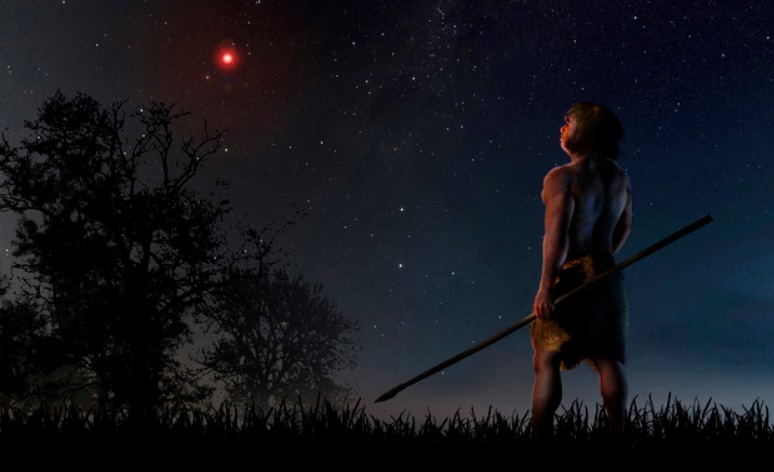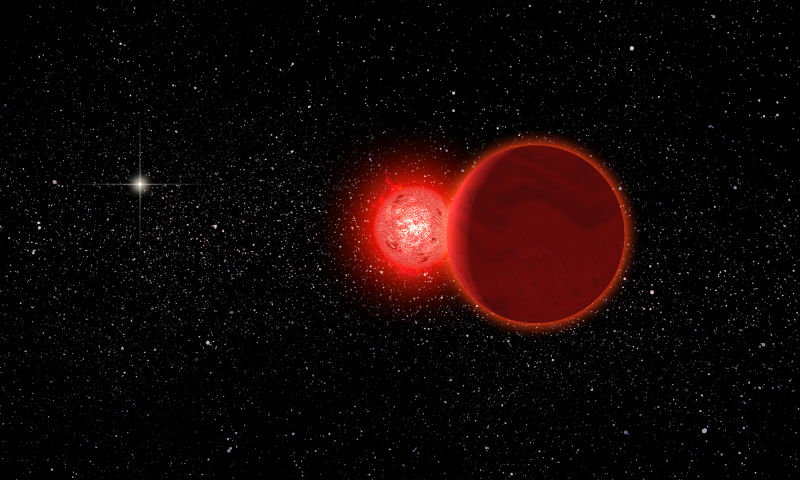Evidence is building that a red dwarf star once grazed the edges of our solar system, and may have been visible in the night sky to humans and some of our now-extinct cousins.

Evidence of the fly-by was first uncovered in 2015, when astronomers used the star’s current position (about 20 light years away) to calculate its backward trajectory, leading them to conclude that it almost certainly came within one light year of our own sun about 70,000 years ago.
WATCH: Why an astronaut’s DNA not matching his identical twin’s after going into space matters

Named Scholz’s star after its German discoverer, the red dwarf was probably much too faint to be seen with the naked eye most of the time, but humans may have been able to spot it for a few minutes or hours during flare-ups.
The star has less than 10 per cent the mass of our sun, and travels through the cosmos with a companion brown dwarf — a “failed star” that lacked the necessary mass to begin fusion in its core.
Now, in a new study published in the Monthly Notices of the Royal Astronomical Society, researchers from the Complutense University of Madrid have been able to use a different kind of evidence to back up those initial findings.

Get breaking National news
They looked at over 300 known bodies (comets, etc.) in our solar system that had unusual, v-shaped — or “hyperbolic” — orbits. When the team calculated where these objects had come from, they saw that a statistically significant cluster pattern emerged. It suggested that many of them had been pulled off course or had their orbits disturbed around the same time and in the same region on the very outer edges of our solar system. The culprit? None other than Scholz’s star.
“It could be a coincidence, but it is unlikely that both location and time are compatible,” said Carlos De la Fuente Marcos, one of the study’s authors, in a release.
The new findings also suggest that the star came closer to our sun than originally thought, perhaps even as close as 0.6 light years away, or 5.7 trillion kilometres.
At the time, modern humans were just getting set to migrate out of Africa, but there weren’t very many Homo sapiens on Earth. Around that same period, we almost went extinct for reasons that are still being disputed by the experts.
Our cousins Homo neanderthalensis (Neanderthals) and the smaller Homo floresiensis (Hobbit) were also still around, however, and may have spotted the star’s reddish hue at night.



Comments